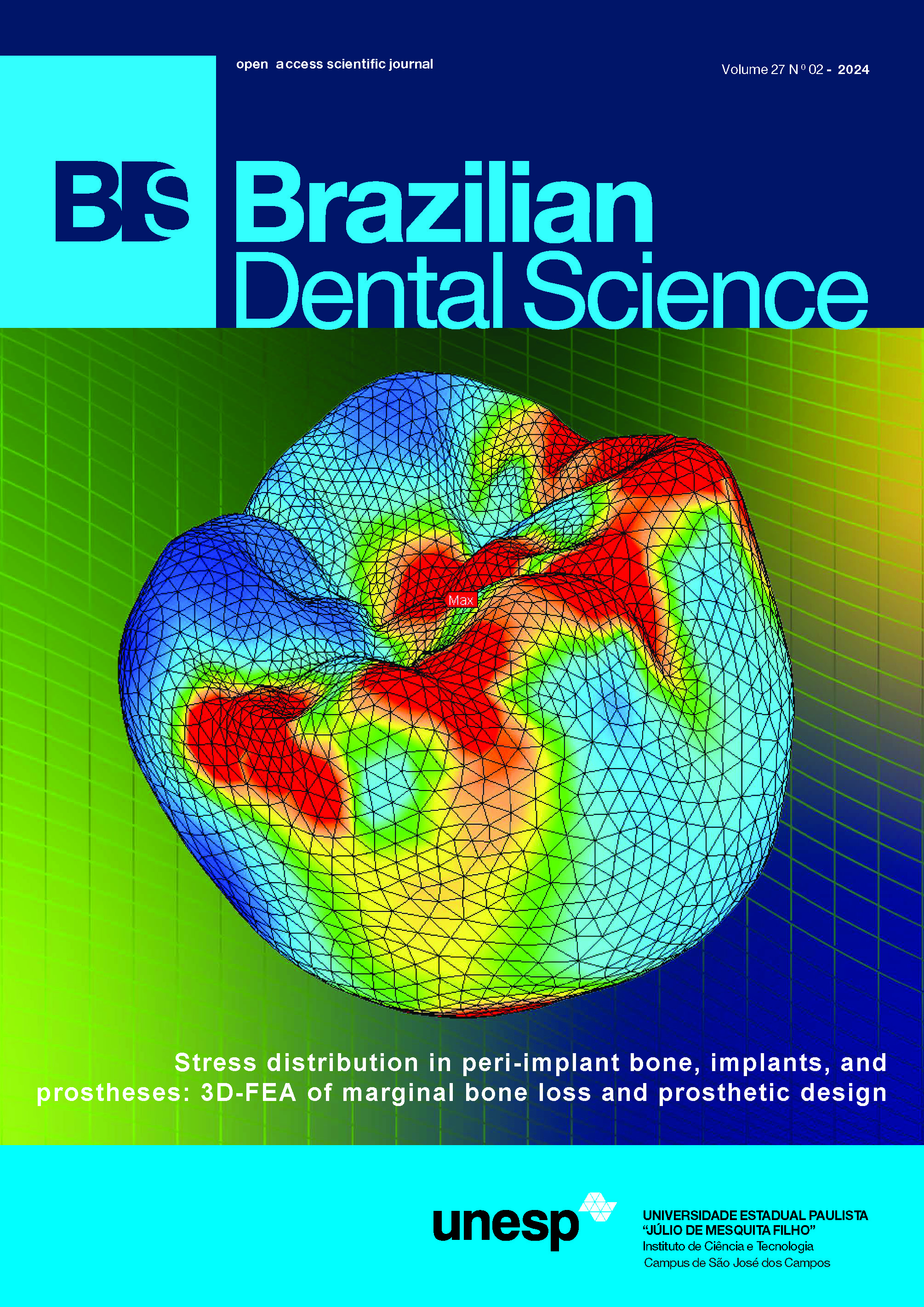Effect of loading protocol on peri-implant marginal bone loss: randomized clinical trial
Loading protocol in peri-implant
DOI:
https://doi.org/10.4322/bds.2024.e4186Resumo
Objective: This clinical study was conducted to evaluate the effect of loading protocol using hybrid ceramic resinous material on marginal bone loss. Material and Methods: This study was conducted in the fixed prosthodontics department, at Ain Shams University on 30 titanium endosseous tapered threaded implants which were placed in 30 patients in the upper premolar area. Patients were divided randomly according to the loading protocol into 3 groups (10 patients each): Group I (IFLV): patients received CAD/CAM polymer infiltrated ceramic (VITA-ENAMIC) crowns (immediate functional loading), Group II (IFLP): patients received CAD/CAM PMMA crowns (in occlusion for 3 months) followed by CAD/CAM polymer infiltrated ceramic (VITA-ENAMIC) crowns (functional loading), and Group III (INFLP): patients received CAD/CAM PMMA crowns (out of occlusion for 3 months) followed by CAD/CAM VITA-ENAMIC crowns (functional loading). Results: After three months; the highest value of marginal bone loss (mm) was found in IFLV, followed by IFLP, while the lowest value was found in INFLP. After six months, the highest value was found in IFLP, followed by IFLV, while the lowest value was found in INFLP. Also, after twelve months, the highest value was found in IFLV, followed by IFLP, while the lowest value was found in INFLP. Marginal bone loss values were within the accepted values for clinical success for all the tested groups. Conclusion: Immediate non-functional loading provided more acceptable outcomes than immediate functional loading. Also, immediately functional and non-functional implant loading using hybrid ceramic as permanent material has shown promising results with proper patient selection.
KEYWORDS
Bone loss; CAD/CAM; Ceramic; Hybrid; Loading.
Downloads
Downloads
Publicado
Como Citar
Edição
Seção
Licença
TRANSFERÊNCIA DE DIREITOS AUTORAIS E DECLARAÇÃO DE RESPONSABILIDADE
Toda a propriedade de direitos autorais do artigo "____________________________________________________________________" é transferido do autor(es) para a CIÊNCIA ODONTOLÓGICA BRASILEIRA, no caso do trabalho ser publicado. O artigo não foi publicado em outro lugar e não foi submetido simultaneamente para publicação em outra revista.
Vimos por meio deste, atestar que trabalho é original e não apresenta dados manipulados, fraude ou plágio. Fizemos contribuição científica significativa para o estudo e estamos cientes dos dados apresentados e de acordo com a versão final do artigo. Assumimos total responsabilidade pelos aspectos éticos do estudo.
Este texto deve ser impresso e assinado por todos os autores. A versão digitalizada deverá ser apresentada como arquivo suplementar durante o processo de submissão.




























